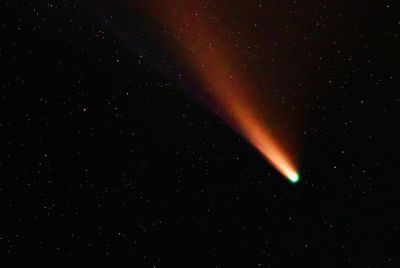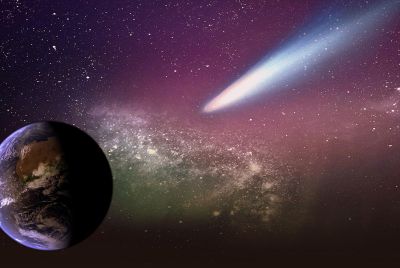Avi Loeb Links 3I/ATLAS to 1977 Wow Signal—Calls It a '0.6% Cosmic Coincidence'
Avi Loeb links interstellar object 3I/ATLAS to the 1977 'Wow! Signal', citing a '0.6% coincidence'.

In 1977, a radio telescope in Ohio received a signal so powerful, so unnatural, that astronomer Jerry Ehman scrawled one word on the printout: 'Wow!'. For nearly five decades, that 72-second burst from deep space has remained one of science's most profound and unanswered questions.
Now, renowned Harvard astrophysicist Avi Loeb has revealed a stunning new clue. Loeb, the former chair of Harvard's astronomy department and head of the Galileo Project, has never been shy about challenging scientific orthodoxy. He suggests a potential link between the mysterious signal and an interstellar object, a connection he calculates as a '0.6% cosmic coincidence'.
A New Visitor From the Same Cosmic Neighbourhood?
During a recent discussion, Professor Loeb pointed to the interstellar object designated 3I/ATLAS. Interstellar objects are celestial bodies, like asteroids or comets, that pass through our solar system after travelling from another star system. They are incredibly rare, and 3I/ATLAS is one of only a handful ever detected.
Loeb revealed that its path through our solar system was extraordinary for a very specific reason. The object approached from a region of the sky just 9 degrees away from the source of the 1977 'Wow! Signal'.
According to Loeb, the probability of these two distinct, significant events aligning so closely by sheer chance is incredibly slim, at just '0.6%'. This unlikely alignment has prompted him to examine the connection more seriously.
Why That 1977 Signal Still Haunts Astronomers
The 'Wow! Signal' was not a typical cosmic blip. It was an 'enigmatic, powerful radio signal' that was confirmed to have 'definitely came from outside of this Earth', Loeb reminded listeners. The signal, which lasted 72 seconds, was never detected again, despite numerous attempts to find it.
It was detected approaching the sun, and its strength was baffling. Loeb puts this power into perspective, noting that such a strong signal could be generated with 'the power of a standard nuclear reactor', roughly a 'gigawatt or so'.
This suggests that if the signal was artificial, it would require a significant, but not impossible, power source. Such an output is well within the capabilities of an advanced technological civilisation.
Avi Loeb revealed that the path of the interstellar object #3IATLAS nearly matches the direction of the 1977 Wow Signal
— Surajit (@surajit_ghosh2) October 28, 2025
3IATLAS approached from a region only 9 degrees away from where the Wow Signal was detected an unlikely coincidence of just 0.6%
This radio burst was… pic.twitter.com/c7KhchVt6H
Are We Ignoring Clues in Our Own Backyard?
This latest observation fits perfectly with Professor Loeb's long-standing argument: that humanity must be more open to searching for technological signatures, or 'technosignatures', from other civilisations. He often highlights humanity's own fledgling steps into the cosmos to illustrate how much we have yet to explore.
'By the way, Voyager, as of now, is one light day away from Earth', Loeb stated. He then contrasted this with the vastness of our galaxy.
'The size of the Milky Way galaxy, we are talking about tens of thousands of light years', he explained. This stark comparison highlights that our furthest probe has only travelled one day, in a galaxy that takes tens of thousands of years to cross.
A Coincidence, or a Message and a Messenger?
Loeb's new link between 3I/ATLAS and the 'Wow! Signal' raises a tantalising, if speculative, possibility. Could the signal have been a 'breadcrumb' or a beacon? And could this interstellar object be, knowingly or not, a probe or fragment originating from the same source?
While Loeb himself labels it a statistical coincidence, it is precisely the kind of anomaly he argues scientists should be investigating, rather than dismissing.
He maintains that the scientific community is often too conservative, ignoring data that does not fit established theories. This 0.6% possibility is, for Loeb, a data point worthy of further investigation, not immediate rejection.
© Copyright IBTimes 2025. All rights reserved.





















